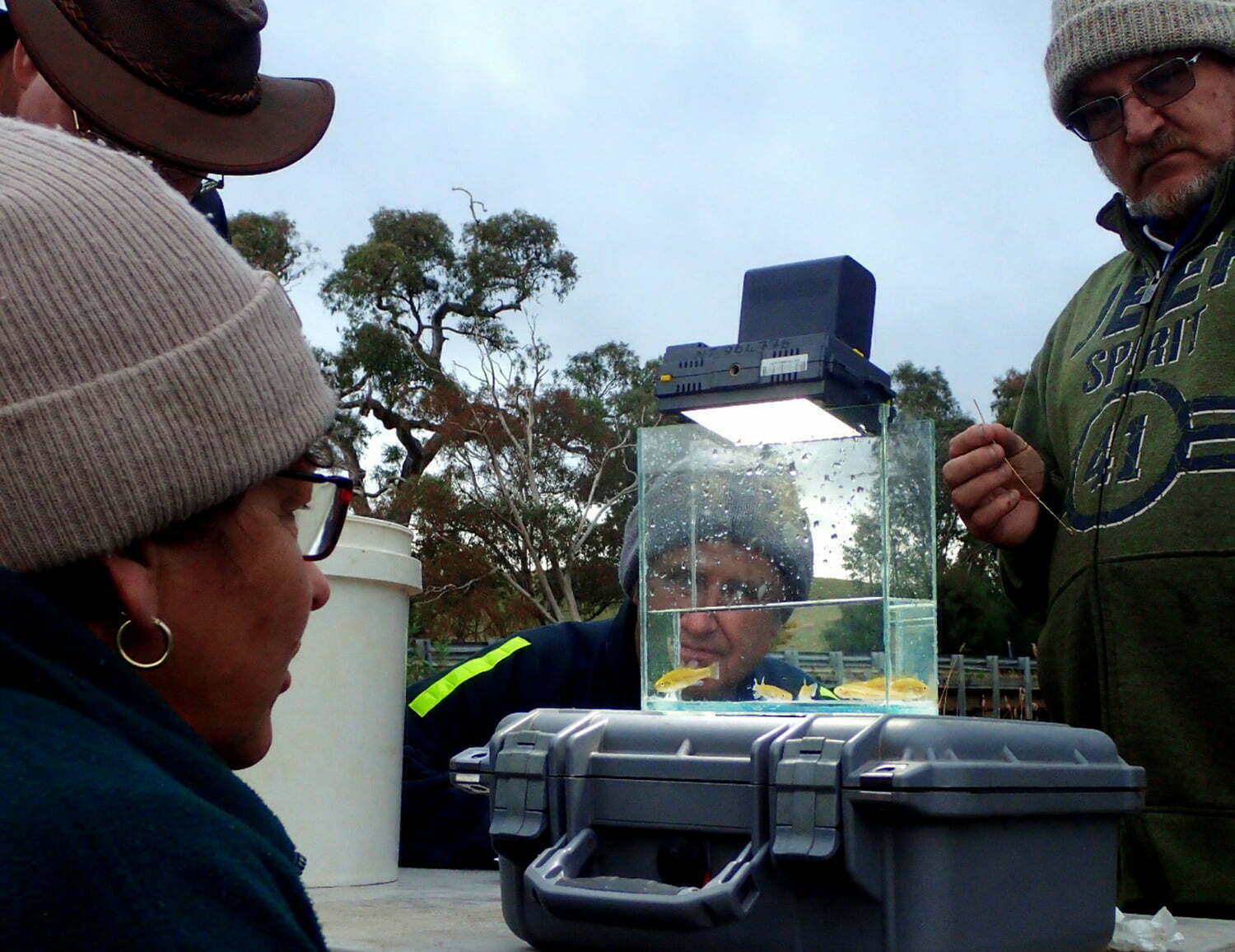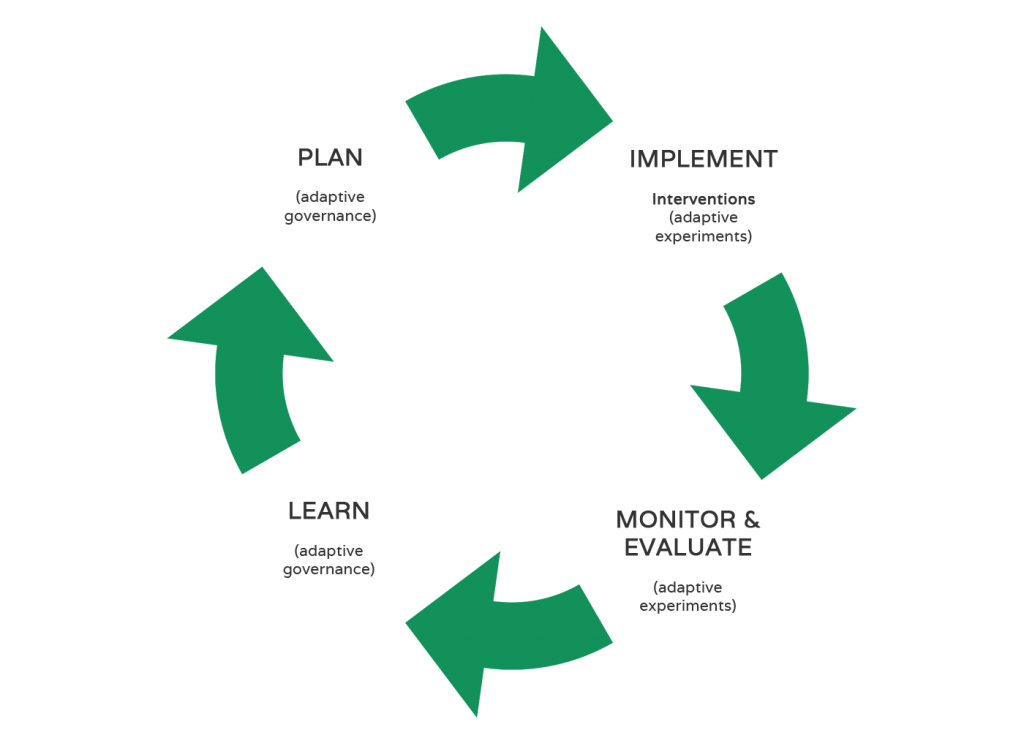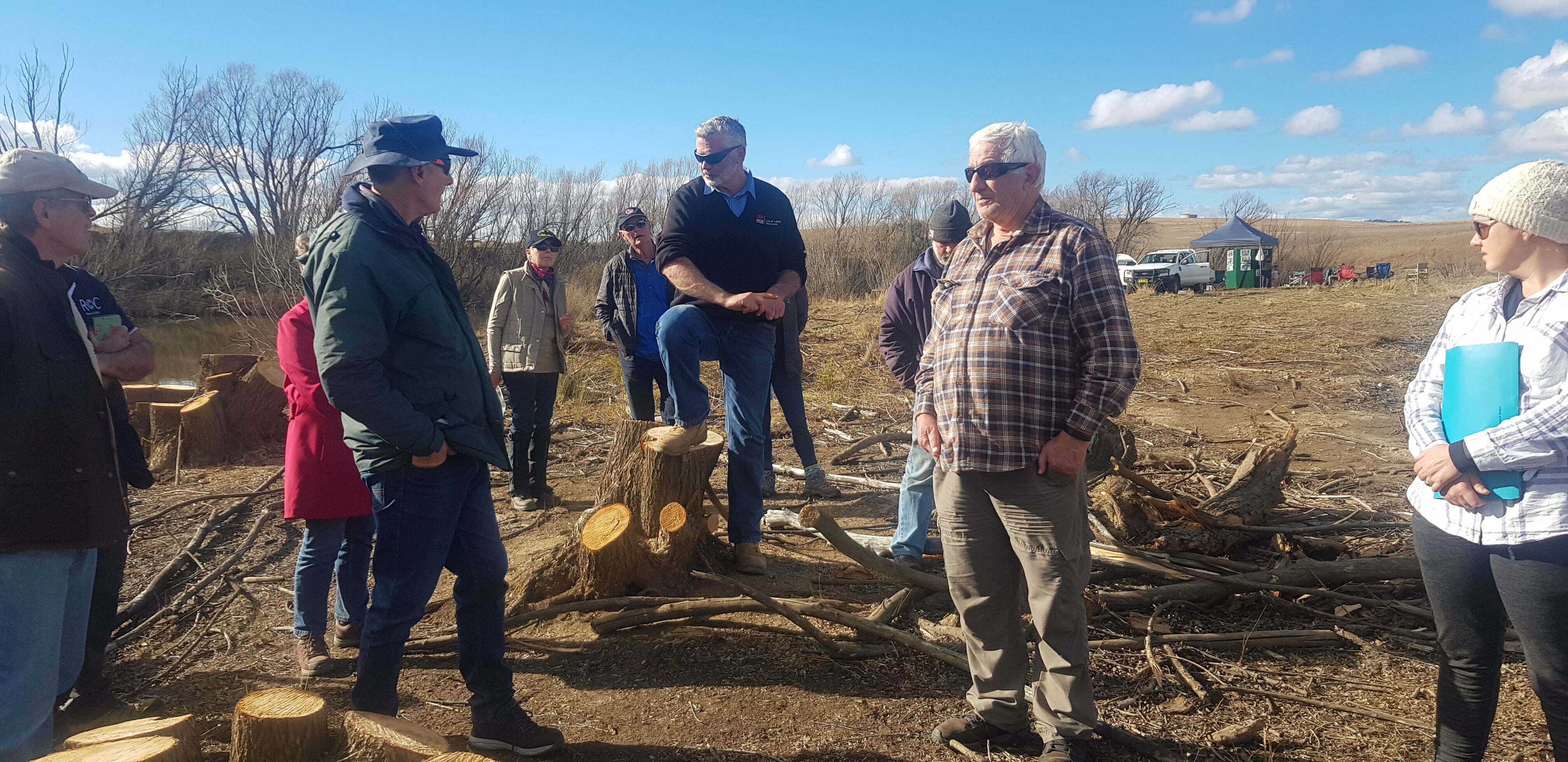Pillar 4 – Monitoring and Evaluation: Adaptive Management
← Back to Pillar 4 – Monitoring and Evaluation

Quick tips:
- An adaptive management approach is essential if rehabilitation actions in demonstration reaches are to comply with “best management” principles.
- Adaptive management requires rigorous monitoring to enable the success or otherwise of restoration and engagement activities to be tested.
- Management interventions must be designed to test hypotheses and be closely linked to the monitoring program.
- The planning and governance framework must be flexible enough to respond in a timely manner to outcomes of monitoring and evaluation (adaptive experiments) and modify management actions accordingly (adaptive governance).
- Rigorous monitoring to demonstrate the impacts of interventions coupled with adaptive management is a core component of all Demonstration Reaches. In comparison, Rehabilitation Reaches where management interventions are undertaken without rigorous monitoring are high risk ventures, as the impacts of the management activities will remain largely unknown.
Demonstration reaches are all about implementing a range of on-ground actions designed to achieve strategic goals that primarily focus on aspects of rehabilitating native fish populations. An adaptive management approach is taken by implementing a rigorous monitoring and evaluation program to test that these actions are “best practice”, and modifying them as necessary.
Similarly, a number of communication and engagement activities are implemented to involve all stakeholders in the project. These activities will be wide ranging from field days to dissemination of posters, information pamphlets, and school visits for example. The success of these communication and engagement activities must be evaluated and modified as necessary to maximise their impacts.
It is important to recognise that there are two components to adaptive management; adaptive governance and adaptive experimentation (see figure below).

Management activities are designed to test hypotheses through on-ground ecological experiments. The design and implementation of river restoration management interventions (e.g. re- snagging, riparian restoration etc.) needs to be undertaken to test specific hypotheses, and this means that is must be designed in conjunction with the monitoring and evaluation plan, not separately. For example, it does not work if you “piggy back” on an existing resnagging program and then try to design a monitoring and evaluation program around it. Rather, the snagging program has to be designed to test a particular hypothesis, and the snags placed in the river in a way that allows the hypothesis to be tested.
The planning processes for a demonstration reach (see Planning Pillar) and the monitoring evaluation program must be properly coordinated and integrated. They must be flexible enough to respond to the outcomes of the monitoring and evaluation (adaptive experiments) by modifying management actions accordingly (adaptive governance).
Similarly, communication and engagement activities can be viewed as on-ground experiments (adaptive experiments) that need to be tested and the planning process must be flexible enough to respond to the results (adaptive governance).
Whatever funds are available, the steps outlined in the Ecological Monitoring section can applied to develop a monitoring and evaluation program that is consistent with the adaptive management approach.
There are many online resources and articles relating to these different types of monitoring, it is worth spending some time looking through them when developing your own approach. Just type in the term ‘adaptive management’, ‘monitoring and evaluation – NRM’ etc.

